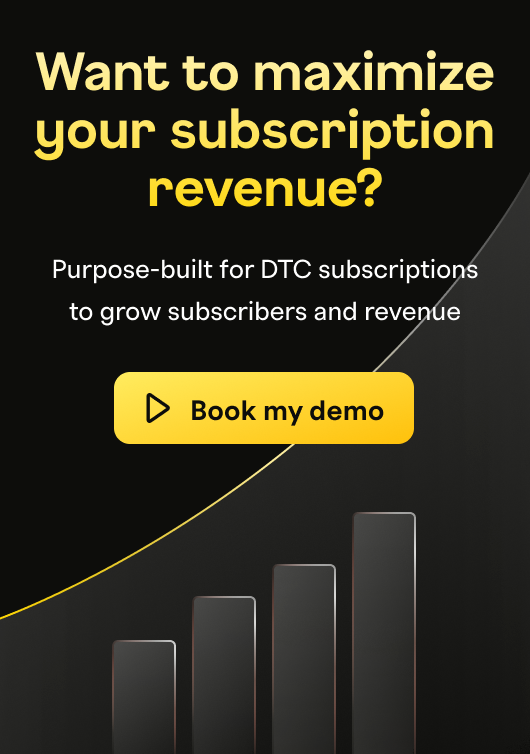How to create an effective SaaS pricing strategy

Software as a Service or SaaS is a juggernaut for the global economy with experts arguing the SaaS market will reach 1,131.52 billion by 2032.
While the market and growth potential are huge, the industry is also more competitive than ever. With the rise of AI platforms with coding capabilities, entrepreneurs and small teams are launching apps that are causing constant market fluctuations.
Whether you’re an established player or a small start-up yourself, it’s critical that you have a growth plan for your pricing strategy. Pricing isn’t a one and done part of your business. Rather, you can be sure that your SaaS pricing strategy will evolve as your business grows and scales and you’ll need to revisit it often and optimize it over time.
In this post, we’ll explore what goes into an effective SaaS pricing strategy and share actionable tactics to create one.
How to create a pricing strategy for your SaaS business?
According to OpenView Survey, more than 40% of companies never test their pricing strategy, and about 55% never conduct research to understand how much their target customer is willing to pay. Without data and insights, companies could be over or even undercharging for their products and services and unknowingly undermining their ability to quickly grow and scale.
It’s important to keep in mind that pricing is far more than just the amount you charge subscribers every month. It impacts your growth trajectory in many facets because it plays into ARPC (Average Revenue Per Customer), CLTV (Customer Lifetime Value), how many new subscribers you need to acquire each month to achieve your goals, and how much it will cost to acquire them (CAC). So how exactly can you build a winning SaaS pricing strategy?
Define Your Buyer Personas: Go beyond job titles. Understand the specific problems each customer segment faces, the value they get from solving them, and their "willingness to pay" (WTP). This is the foundation for all other pricing decisions.
Identify Your Value Metric: What one thing do your customers value most that scales with their usage? Is it per-user, per-project, gigabytes of storage, or number of contacts? This "value metric" is what you will charge for (e.g., $10 per user).
Analyze the Competitive Landscape: Research your direct and indirect competitors. Map out their pricing models (tiered, usage-based, etc.), price points, and the feature sets at each level. This helps you position your product effectively — whether as a premium, value, or low-cost alternative.
Test, Iterate, and Review: Your first price is never your last. Use A/B tests, customer surveys, and churn data to constantly review your pricing. A pricing strategy isn't "set it and forget it"; it's an ongoing process of optimization.
Now let’s explore a variety of pricing models to consider when creating your pricing strategy.
What are popular SaaS pricing models?
Tiered Pricing: Good, Better, Best
A good, better, best pricing model enables you to offer subscribers three options for a product or service. As the name implies, the pricing increases incrementally for the ‘good’, the ‘better’, and the ‘best’ option. In many cases, you’ll see the “better” option highlighted as the preferred option, in order to sway prospects to pick the middle price option so they can still be upsold in the future and to ensure they don’t just pick the cheapest option.
The good, better, best model also implies the value you get from each option as the good usually includes just the basics you need to get started, while the better and best options usually provide more features, more flexibility, and often more support. It’s also implied that you get more value from the better and best options given the additional features and benefits for a nominal increase in price.

You can see how Mailchimp recommends their Standard Plan which is a step up from their most basic paid plan, Essentials.
The benefits of a good, better, best pricing model include:
Allows you to market your product to completely different audiences, allowing for more sales opportunities
Increases subscriber confidence as they understand which features they are paying for
Enables you to upsell from the good or better plans
Quantity-Based Tiered Pricing Model
A quantity-based model is the most popular for SaaS companies because it offers a variety of pricing options in one model. It’s the model used by many of today’s well known SaaS businesses like Jira and Blinkist for B2B and Enterprise contracts.
Tiered pricing is best for companies that want to dynamically raise or lower prices based on the quantity purchased. You often see this in stairstep pricing, a type of tiered pricing where you get so many heads or licenses to use the product for a set price. Once a customer reaches the max limit of the number of heads in their tier they are primed to upgrade which is an excellent revenue accelerator.
Check out this example of pricing from Jira:

The benefits of a tiered pricing model include:
Predictable costs that scale based on demand
Incentivize customers to purchase more to receive a discount
Supports pricing models required by some enterprise businesses
Usage-based pricing model
Best for companies with a transactional business that want to enable customers to pay for only what they use. The trouble with a usage-based pricing model is it can penalize subscribers for usage and backfire resulting in increased subscriber churn unless the benefit of upgrading to a higher usage tier outweighs the added cost. Subscribers must value the product or service enough to pay for more of it.
The benefits of a usage-based pricing model include:
Alignment of price with value leading to less churn
Current usage tracking to nurture upsell opportunities
Adaptable to market conditions and competition
Freemium Business Model
A freemium business model is one in which a company offers a set of services or products for free, and uses ads or sponsorship to turn a profit. For example, Tubi offers free channels that play commercials.
Many SaaS companies offer a freemium pricing model as a method of customer acquisition with the goal of converting these free accounts into paid account over time by offering better features and benefits to paying accounts. As we highlighted above, Mailchimp is one of the best known SaaS email service providers that massively scaled their subscriber base by offering free accounts. Those free accounts come with some “catches” though like having the Mailchimp logo on the bottom of every email sent. While some SMBs don’t mind that when they are in the early growth stage, most businesses over time will want more control over their branding (which Mailchimp knows) and upgrade to remove the logo. It’s a smart move on the part of Mailchimp.
The benefits of a freemium model include:
Decreased barrier to sign up for prospects
Increased subscriber acquisition
Greater opportunities to upsell or upgrade accounts to paid subscriptions based on a larger user base

Wrap up
Creating an effective SaaS pricing strategy will help you understand where you stand in the market, if your target customers can afford to buy from you and if you can deliver on the level of service those customers expect to receive for what they are paying.
While creating an effective pricing strategy for your SaaS business isn’t a set it and forget it tactic, it doesn’t have to be complicated if you ask the right questions and test your plans as you go. Continually evaluate your KPIs like CAC, LTV, and churn to see how your pricing can be improved and conduct tests to see how changes impact your user base before you do a mass rollout.
Want to learn how Recurly can help our SaaS business? Don’t worry, check out our SaaS page to understand how Recurly can help help you drive growth for your SaaS business.
Want to drive more growth for your SaaS? Our platform is built for it. Learn how.

